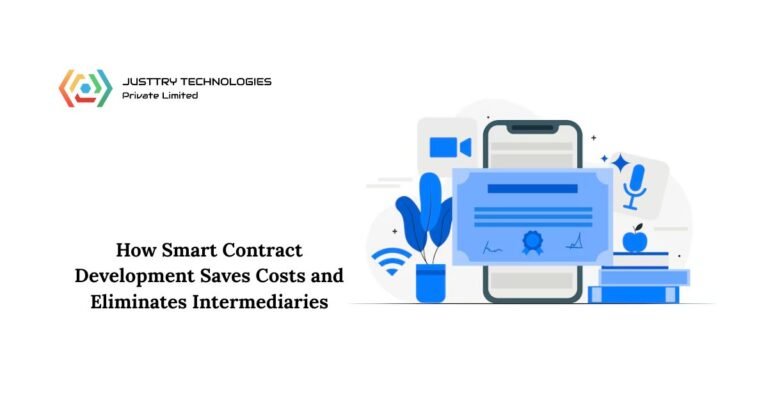Web Application Development Services have become increasingly integral in modern education systems. With the growing demand for digital tools in learning environments, educational institutions, both K-12 and higher education, are turning to web applications for better accessibility, engagement, and efficiency in delivering content. These services involve the design, development, and maintenance of web-based platforms tailored to the unique needs of the educational sector.
-
76% of K-12 schools have adopted web-based learning tools.
-
80% of higher education institutions now use a Learning Management System (LMS).
-
The global EdTech market is expected to reach $404 billion by 2025.
Importance of Web Applications in Modern Education Systems
Web applications have revolutionized the education sector by providing a more flexible, scalable, and engaging way to learn and teach. With features like real-time collaboration, adaptive learning pathways, and remote accessibility, web applications enable educators to create a more inclusive, engaging, and personalized learning experience. As educational institutions strive to keep up with technological advancements, leveraging Web Application Development Services ensures that learning platforms remain innovative, user-friendly, and effective in meeting diverse educational needs.
The Role of Web Application Development in the Education Sector
1. Evolution of Education Through Technology
Education has come a long way from traditional classroom setups to digital learning environments. The use of web applications in education has enabled interactive learning, instant communication between students and teachers, and seamless access to educational resources. Web-based learning platforms have provided the foundation for personalized learning, blended learning, and even remote education, especially in the wake of the global pandemic.
2. Benefits of Web Applications in Education
The integration of web applications in education brings numerous benefits:
-
Flexibility: Students can access learning materials anytime and anywhere, facilitating self-paced learning.
-
Engagement: Interactive features such as quizzes, videos, and collaborative tasks keep learners engaged.
-
Scalability: Web applications can easily scale to accommodate thousands of users, making them ideal for large institutions or online courses.
-
Real-time Collaboration: Teachers and students can collaborate in real-time, sharing documents, assignments, and feedback instantly.
Key Features of Web Application Development Services for Education
1. Learning Management Systems (LMS)
A central feature of web applications in education is the Learning Management System (LMS), which allows educators to create, manage, and distribute courses online. It serves as a comprehensive platform for delivering lessons, tracking student progress, and fostering collaboration among students.
-
Course Creation: Teachers can upload videos, PDFs, and interactive modules.
-
Progress Tracking: LMS provides tools for tracking students’ learning milestones and performance metrics.
-
Student-Teacher Interaction: Web applications include discussion boards and messaging systems for enhanced communication.
2. Online Assessment and Testing Tools
Web applications are also equipped with online assessment tools that streamline the testing and grading process. These tools are essential for monitoring students’ progress and providing immediate feedback.
-
Automated Grading: Save time with auto-grading features that provide instant results.
-
Diverse Question Formats: Multiple-choice, short-answer, and essay-style questions can be integrated into tests.
-
Analytics: Data-driven insights help educators identify students’ strengths and areas for improvement.
3. Collaboration and Communication Tools
Web applications in education facilitate collaboration through integrated communication tools such as forums, instant messaging, and video conferencing.
-
Group Discussions: Enable collaborative learning by creating discussion boards for students.
-
Virtual Classrooms: Features like video calls and shared whiteboards allow for synchronous learning.
-
Peer Review: Students can review and provide feedback on each other’s work, promoting collaborative learning
4. Personalized Learning Experiences
Web applications can leverage adaptive learning technologies to offer personalized learning experiences based on the student’s strengths, weaknesses, and learning pace.
-
Tailored Content: Course material is customized according to each student’s learning level.
-
Adaptive Learning Paths: Students progress at their own pace, with the system adjusting content difficulty.
-
Gamification: Elements like points, badges, and leaderboards enhance student motivation.
5. Analytics and Reporting Features
Educational web applications provide robust analytics tools for tracking student performance and engagement. These tools help teachers make data-driven decisions about instructional strategies and interventions.
-
Student Performance Reports: Detailed reports give insights into individual and group performance.
-
Course Analytics: Track how students interact with different course materials to optimize content delivery.
How Web Applications Enhance Learning Platforms
1. Accessibility and Flexibility in Learning
One of the key advantages of web applications in education is the ability to provide access to learning materials from anywhere at any time. This accessibility is crucial for non-traditional learners and those in remote locations. Moreover, students can learn at their own pace, leading to more effective and personalized learning experiences.
2. Engaging User Interfaces and Experiences
A well-designed web application ensures that learners are engaged. Interactive interfaces, easy navigation, and visually appealing layouts make it easier for students to focus on their studies.
-
Interactive Modules: Engage students with videos, quizzes, and interactive content.
-
Responsive Design: Web applications are optimized for all devices, ensuring seamless learning on desktops, tablets, and mobile phones.
3. Real-Time Interaction and Feedback
Web applications enable real-time communication between students and educators. Instant feedback on assignments, quizzes, and participation keeps students motivated and informed.
4. Gamification and Interactive Features
Incorporating gamification elements such as badges, leaderboards, and rewards can make the learning process more engaging for students. These features promote competition and motivation, helping students stay focused on their learning goals.
Technology Stack for Web Application Development in Education
1. Front-End Technologies
Front-end technologies are crucial for creating intuitive and responsive user interfaces. Popular choices include:
-
HTML5 and CSS3: For structuring and styling content.
-
JavaScript: For dynamic and interactive content.
-
ReactJS and Angular: Popular frameworks for building scalable and responsive front-end applications.
2. Back-End Technologies
The back-end is responsible for handling data processing, user authentication, and business logic. Commonly used back-end technologies include:
-
Node.js: A popular framework for building scalable applications.
-
PHP and Python: Widely used for server-side scripting.
-
Ruby on Rails: Known for rapid development and scalability.
3. Database Management Systems
A robust database management system is necessary to store educational content, user data, and performance metrics. Common database systems include:
-
MySQL: A reliable relational database.
-
MongoDB: A NoSQL database known for flexibility and scalability.
4. Security Protocols in Educational Web Applications
Security is critical in educational applications to protect student data and intellectual property. Encryption protocols, secure logins, and regular audits are essential practices for ensuring data privacy.
Challenges in Web Application Development for Education
1. Ensuring Accessibility for Diverse Learners
Web applications must cater to a wide range of learners, including those with disabilities. Ensuring accessibility through WCAG (Web Content Accessibility Guidelines) compliance is critical for creating inclusive educational platforms.
2. Data Privacy and Security Concerns
Educational platforms handle sensitive data, including personal information and grades. Implementing security measures like encryption, multi-factor authentication, and regular vulnerability assessments is essential to protect user data.
3. Scalability and Maintenance of Learning Platforms
As user demand grows, educational web applications need to scale efficiently. Ensuring that the platform can handle increased traffic without compromising performance is crucial for long-term success.
4. Addressing Technological Inequality
Not all students have access to high-speed internet or modern devices. Developers must consider these factors when designing educational platforms to ensure they are usable across various environments.
How to Choose the Right Web Application Development Services for Education
1. Assessing Your Institution’s Needs
Before choosing a service provider, it’s essential to assess the specific needs of your educational institution. Determine the features required, such as an LMS, assessment tools, or communication systems.
2. Evaluating Service Providers: Key Factors
Evaluate service providers based on their experience, portfolio, customer reviews, and support services. Ensure they understand the unique challenges and requirements of the education sector.
3. Budget and Timeframe Considerations
Set clear budgets and timelines for development. Web application development can be costly, so ensure that the service provider offers a solution that aligns with your financial and time constraints.
4. Ensuring Long-Term Support and Maintenance
Ensure that the service provider offers post-launch support, including updates, bug fixes, and scalability enhancements.
The Future of Web Application Development Services in Education
1. The Rise of Artificial Intelligence and Machine Learning
AI and machine learning are transforming educational web applications by enabling personalized learning experiences and intelligent tutoring systems.
2. Mobile Learning Integration
With the increasing use of mobile devices, web applications are increasingly optimized for mobile learning, providing seamless access to educational content.
3. Blockchain and Its Potential Impact on Education
Blockchain technology has the potential to revolutionize the way credentials and certifications are issued, offering secure, transparent, and verifiable academic records.
Conclusion
Web Application Development Services have proven to be a cornerstone in transforming the education sector. By providing flexible, scalable, and interactive learning platforms, these services enable institutions to offer personalized and engaging learning experiences. With continuous advancements in technology, the future of educational web applications looks bright, promising even more innovative and effective solutions for learners and educators alike.
FAQs
Q1: How can web applications improve the student-teacher interaction?
Web applications provide tools such as real-time messaging, video calls, and collaborative documents, enhancing communication between students and teachers.
Q2: Are web applications secure for handling sensitive student data?
Yes, modern web applications use encryption, multi-factor authentication, and data protection protocols to ensure the security of student data.
Q3: Can web applications scale to accommodate growing student numbers?
Yes, web applications can be built to scale easily, ensuring they perform well even with a large number of users.





